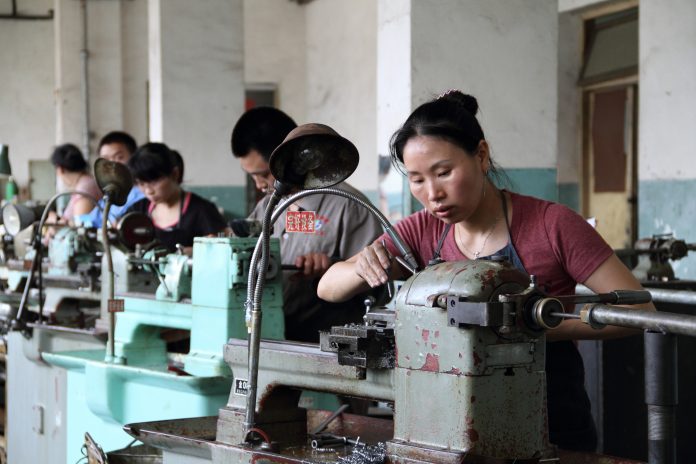Gavin Proudley, Global Director, Due Diligence and Managed Services at Dow Jones Risk & Compliance, discusses supply chain risks and the Leicester garment sector
The COVID-19 pandemic has intensified supply risks in global trade. International businesses, particularly those relying on multiple suppliers for production, are suddenly being exposed to widespread supply chain disruption — the likes of which we have never seen before.
Historically, the textile and garment sector relies on suppliers of low-cost inputs for large multinational brands and businesses, which has led sometimes to unscrupulous working conditions and the exploitation of workers. In fact, according to The Centre for Social Justice and Justice and Care, there are at least 100,000 modern day slavery victims in the UK. These issues necessitate the United Nations’ Guiding Principles on Business and Human Rights, and international laws to put responsibility on businesses (this includes brands and suppliers) to ensure their production processes are safe and ethical.
The current crisis has meant that due diligence is being conducted remotely across the globe — at a time where many organisations are needing to restructure their supply chain network and onboard new third-party suppliers. It is getting harder and harder to spot and assess weak links within their supply chain — including those suppliers who may be involved in labour exploitation.
Businesses that rely solely on the assurances of suppliers to maintain the integrity of their supply chain are at risk of regulatory exposure and severe reputational damage. But while more and more risk evaluation is now being done “at a distance”, there are things businesses can do to better safeguard the integrity of their supply chains — and hold suppliers to account when they fall short of expectations.
How can you hold suppliers to account?
-
Ask the right questions
Under normal circumstances, it is important to have all the right information and assurances from third-party suppliers and distributors — but even more so during a global crisis. As part of the process, you will need to re-evaluate new threats and disruption to your supply chain network. With trade slowing down in some cases, this is a great time to seek new assurances and better understand the makeup of those companies your operations rely on.
By asking the right questions, such as requesting to see a supplier’s pandemic response assurances and plans, as well as local safety certificates and reports, you can better ensure they are complying with new rules and safety guidelines in their respective regions. For instance, do workers have PPE and is the site COVID-19-secure? Businesses must take responsibility and be prepared to sift through the data and information provided in order to pre-empt regulatory or reputational issues on the ground.
-
Identify red flags
Understanding your data source and the overall landscape is another important part of identifying risks that may impair the integrity of the supply chain. It’s vital that companies screen potential partners and suppliers using high quality risk data — drawn from trusted, publicly available sources, such as news articles and official reports — to validate the third party’s own responses and catch any red flags associated with sanctions and other clear regulatory risks. In instances where there are no initial warnings from the data screening process, a good compliance team will still insist on implementing a robust set of checks. These additional checks can include particular certificates such as health and safety reports, and assess the ownership structures through a beneficial ownership audit, which may uncover other unscrupulous entities hidden from the initial screening. We recommend implementing a multi-layer screening process when vetting and onboarding new partners.
-
Consider high-risk operations
Some types of supplier are considered riskier than others, and it is crucial to understand the criteria that can heighten your exposure to industry malpractices. For instance, factory-type operations in jurisdictions with a lax enforcement apparatus will generally require additional monitoring and regular screening to maintain compliance.
In our experience, red flags in some aspects of the business can be an indicator of non-compliance in other areas. For example , failures to adhere to corporate filing requirements may not be considered a significant concern, but they might be symptomatic of a lax approach that is reflected in other, more important, functions. In some jurisdictions it will be possible to check the litigation history of the company; again – certain events could be an indicator of a less robust approach to compliance or ethical business.
An effective compliance review will therefore be looking not just at specific supply chain risks, but more broadly at the business practices and track record of the company.
Such a review will draw on a wide range of data sources – including local regulatory databases, local language press and media and formal corporate records.
-
Monitor their finances
When you are looking at supply chain risks, consider your third party’s financial standing and request complex financial and registration records in order to have an overview of the entire business. For instance, if a company is dependent on your organisation for income – whether it be partially or entirely – that may be a red flag that requires further context to understand the nature of the business. Additionally, if their reported profit exceeds expected income margins, it may point to labour issues on-site.
A pandemic is no excuse for non-compliance. It might appear to herald an interim period of more relaxed supervision of regulated businesses; however, it would be a mistake to think this means compliance can be ignored altogether, or that enforcement is slowing down. Organisations must answer to regulators, their stakeholders and society at large — and the expectations are only increasing.











